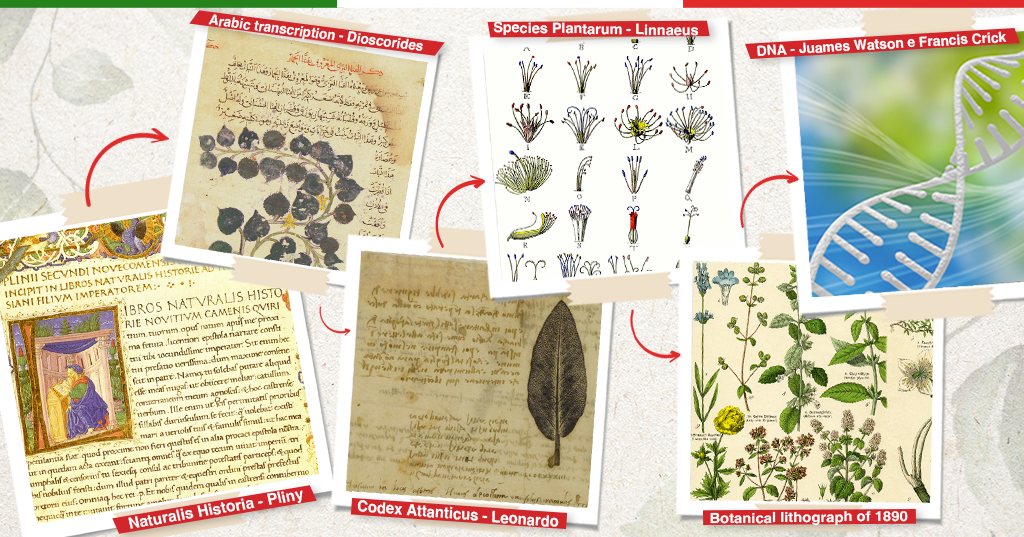
Scientific naming of plants: origin and importance
Formal botanical names are used as the "lingua franca" for a unique identification of plants worldwide. Essentially, it is their scientific designation, established after the taxonomic classification process. It enables the identification of a plant irrespective of vernacular names, which vary from one language to another or even from one region to another within the same country. Today, the rules of botanical naming are established by the International Code of Nomenclature for algae, fungi, and plants (ICN or ICNafp), with the latest version coming into effect in 2018.
The botanical nomenclature, as we know it, essentially originated with Linnaeus in 1753. However, there is a long and intricate story to tell to fully understand the importance of the scientific names of plants.
From Theophrastus to the Middle Ages
Since ancient times, names were attributed to what we would now consider species, based on their specific features and uses, ranging from food to decorative or functional purposes. However, it was the Greek philosopher Theophrastus (371-287 BCE) who first attempted to describe, group, and differentiate plants based on their characteristics, following the teachings of his great master Aristotle. He recognized the need for a classification of the plant world, for which he is remembered as the father of botany and taxonomy. His work "Historia Plantarum" was translated into Persian and Arabic during the Middle Ages but remained largely unknown in Europe until the 15th century, where the works of Pliny the Elder (23-79 CE) and Dioscorides (~ 40-90 CE) had greater popularity.
The Renaissance
The Renaissance marked a period of rebirth for science in general and botany in particular. The oldest botanical gardens were established at universities (Pisa in 1544, Padua and Florence the following year), in the path ideally traced by medieval monastery gardens, known as horti sanitatis. Furthermore, Europeans were exploring new continents, bringing back many unknown plants that were acclimatized in Italian gardens and also in other countries. The invention of the printing press (1450-1455) facilitated the circulation of information and ideas, contributing to the progress of scientific knowledge.
It was the Italian Andrea Cesalpino (1519-1603), who, based on Aristotelian principles proposed in his "De Plantis Libri XVI" (1583) a more rational and innovative classification of plants based on the morphology of flowers and fruits, so replacing the alphabetical order previously used to organize herbaria.
Linnaeus and the birth of the binomial system
In the first half of the 18th century, the Swedish botanist Carl Linnaeus brought order by creating a clear system of plant classification based on the number of stamens and stigmas of flowers, which allowed the identification of a plant by genus and species, replacing the complicated descriptive system used up to that point.
This simple and rational system, described in his famous work "Species Plantarum" (1753), inaugurated the binomial nomenclature still in use today, made of the genus name to which the species belongs and an epithet that distinguishes that species from others within the same genus.
Evolutionary thinking in the classification theory
At the beginning of the 19th century, taxonomists were no longer only interested in describing, classifying, and naming organisms but also in explaining the origin of observed diversity.
When Charles Darwin (1809-1882) published "On the Origin of Species" (1859), he introduced into botany the central concept of common descent, which is still generally accepted today under the term phylogenetics. This means that the characteristics useful for taxonomy and, consequently, for botanical nomenclature, are those inherited from a common ancestor.
Thus began a new era in the classification of nature, reflecting the evolutionary history of life.
The discovery of DNA by James Watson and Francis Crick (1953) significantly improved the understanding of evolutionary processes. At the beginning of the 21st century, molecular data, coupled with increasingly powerful computational algorithms, allow for a more refined delimitation of plant orders and families, facilitating their correct classification and making botanical nomenclature more accurate.
The Importance of botanical naming
It took over twenty centuries to obtain the current binomial nomenclature system, which allows scientists to classify organisms based on unique characteristics. This naming enables people worldwide to refer to a specific plant clearly and concisely, avoiding the confusion caused by common names, which instead reflect the culture and language of different populations.
By convention, Latin names continue to be adopted since Latin has been the lingua franca of scholars for centuries; the genus name always carries a capital initial letter, while the species is written in lowercase; both names are also italicized. The binomial name is followed by the author's name, usually abbreviated.
However, it's essential to remember that, thanks to scientific and technological progress, plant nomenclature is not an immutable code: it may happen that, following a change in classification, part or all the names must be updated, so a species may adopt various names over time. To stay updated, it is therefore crucial to consult official databases, such as WFO Plant List, which also mentions synonyms for each species.